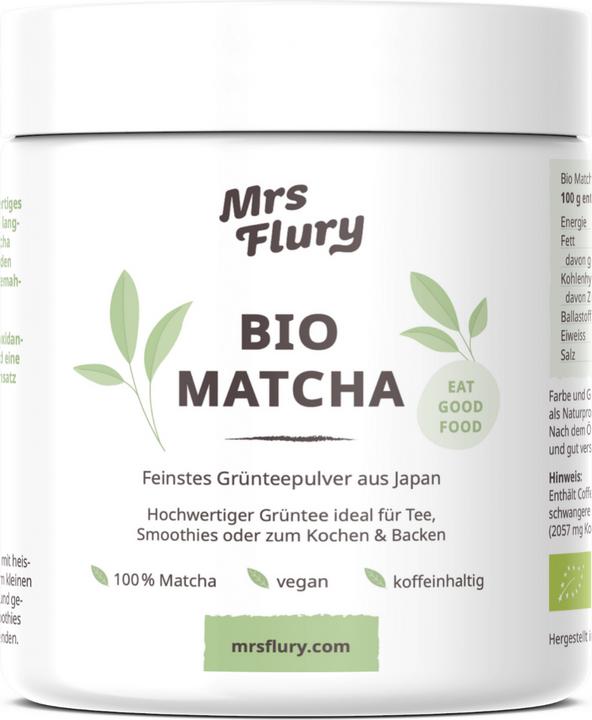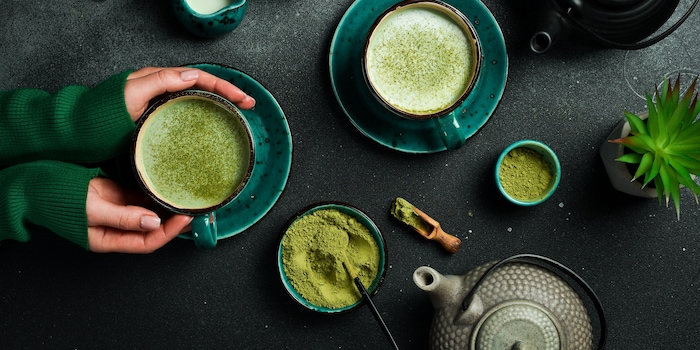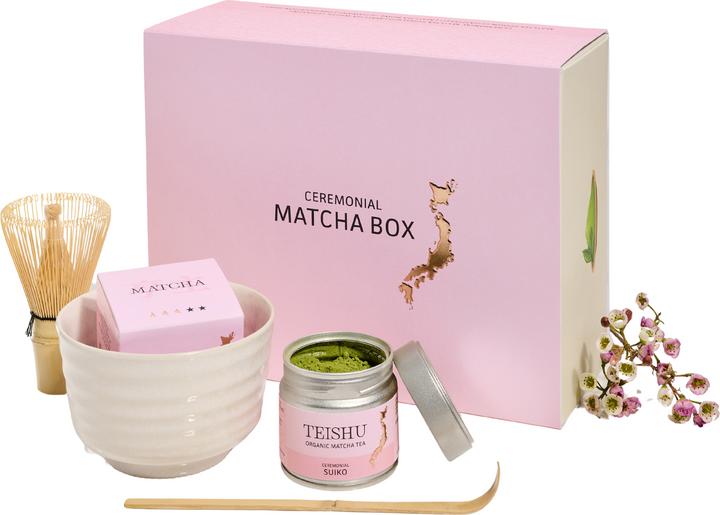

Matcha’s booming: one in eight teas is green powder
At Galaxus, every eighth packet of tea sold today is matcha green. The finely ground tea powder from Japan has gone from insider tip to bestseller in just a few years. But older generations aren’t getting on board with it.
Matcha has made the leap from niche to mass product. In five years, its share of teas sold at Galaxus has increased twelvefold. Every eighth tea that ends up in a Galaxus parcel is now matcha. In contrast, Galaxus customers now drink less loose leaf black or green tea.
The crushed green tea leaves are particularly popular among young people and women. Among under 25s, three out of ten tea packs they purchase today are labelled «matcha». Older people, on the other hand, rarely follow the trend. They stick to black or green tea.
Yuki Gasienica, responsible for the tea range at Galaxus, shares four main reasons for the boom:
- Gentle alternative: Matcha contains caffeine, but thanks to tannins and the amino acid L-theanine, it has a gentler and longer-lasting effect than coffee or energy drinks. Matcha’s also less acidic than coffee and therefore easier on the stomach.
- Health benefits: Matcha’s considered a superfood. The powder’s rich in antioxidants and vitamins. It’s often said that matcha helps with weight loss and prevents cancer and cardiovascular diseases, but this isn’t sufficiently scientifically proven. Matcha preparation also has a certain ceremonial character which fits in with the mindfulness trend.
- Social media: the bright green colour makes matcha an Instagram and TikTok favourite. And iced matcha latte is the influencer trend drink of the year.
- Availability: Matcha used to be a niche product, but today you can find it in your local supermarket or online. Galaxus has also greatly expanded its range in the wake of the boom.
Production can’t keep up
Japanese tea farmers are finding it increasingly difficult to meet the growing demand. In February this year, Japan Times reported on a genuine matcha shortage. And this is difficult to remedy. Firstly, because newly planted green tea bushes need up to five years to produce reliable yields and, by that point, farmers fear the hype could be over again. Secondly, there’s a lack of stone mills, which are needed to grind the tea leaves. Thirdly, due to Japan’s ageing population, there are fewer and fewer farmers in the country, and often no one from the younger generation is willing to take over the farm.
On top of that, Japan was hit by severe heat waves last summer. In the most important growing region of Kyoto in the south of the country, this led to poor yields in the most recent harvest in April and May.
Still, countries such as China, Taiwan, South Korea and the USA are now increasingly growing green tea for matcha. «But they don’t reach the quality of a Japanese ceremonial tea yet», says Yuki. And this can ruffle feathers: «Because the term isn’t protected in Switzerland, some manufacturers refer to their matcha as 'ceremonial grade', even though it would never pass as such in Japan.»
Scarcity bumps up the price
The ongoing shortage is reflected in the price: while the average price for a pack of matcha at Galaxus in 2021 was CHF 10, this year it’s already CHF 23, more than double that amount. And things could soon get even worse. At a traditional first auction in Kyoto this year, the price was 70 per cent higher than last year’s.
However, regarding price trends at Galaxus, Yuki points out that customers have been buying more matcha sets recently. In addition to the tea powder, these contain a ceramic bowl, a spoon, a whisk and often other accessories. «Of course, these sets cost more than a simple packet of matcha», says Yuki.
Now comes the race for accessories
Galaxus data suggests that Swiss matcha fans have apparently been content with a teaspoon, a muesli bowl and a milk frother for some time. However, more and more Galaxus customers are now buying special matcha accessories: this year, bamboo whisks and their holders, measuring spoons and complete sets account for 16 out of 100 sales in the tea accessories segment. A number of tea strainers are also likely to be used for preparing matcha.
So what’s next for the hyped green tea powder? «I don’t see an end to the trend», says Yuki. «In fact, the opposite: with the current media attention, demand’s likely to increase even more.» Yuki and her team therefore want to further expand the range at Galaxus: «This month, for example, we’re adding roasted matcha powder to the range,» she reveals. So matcha remains on trend, in demand and good business.
Are you also a matcha fan, or has the trend passed you by so far? How do you like your matcha? And which variety is still missing from the Galaxus range? Share your thoughts in the comments section!
At Digitec and Galaxus, I’m in charge of communication with journalists and bloggers. Good stories are my passion – I am always up to date.
News about features in our shop, information from marketing and logistics, and much more.
Show all



